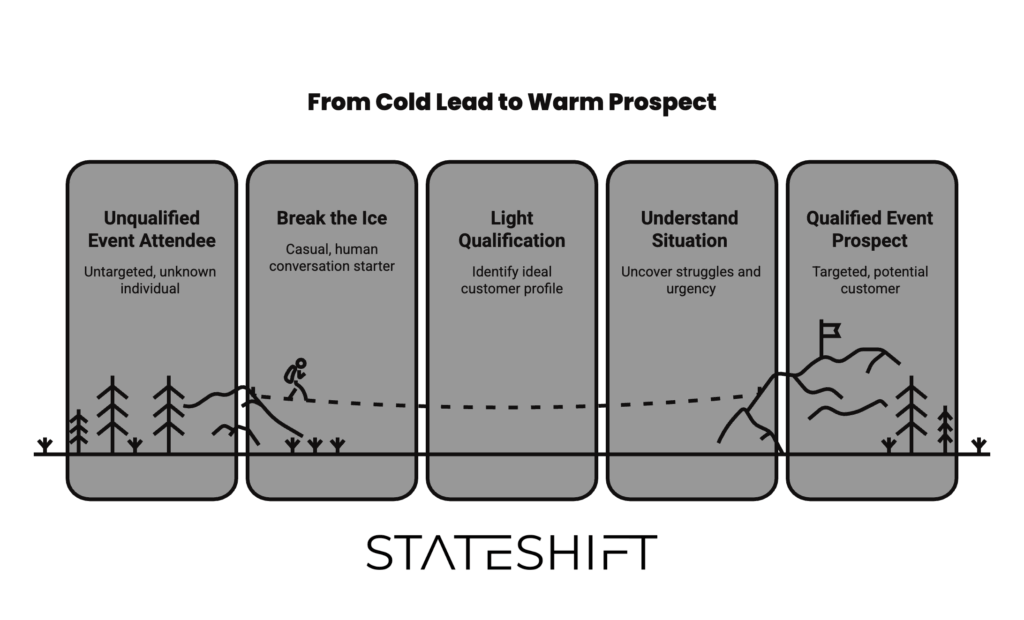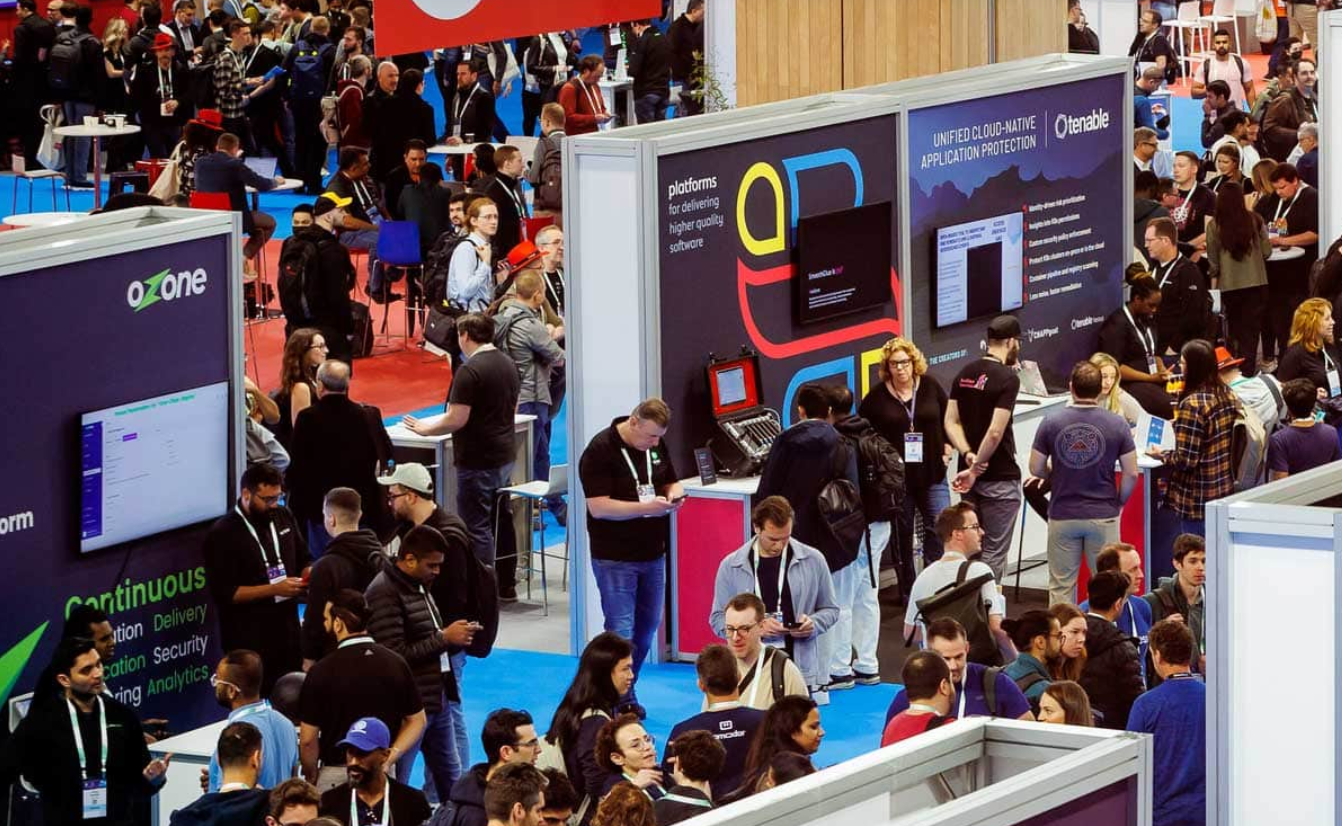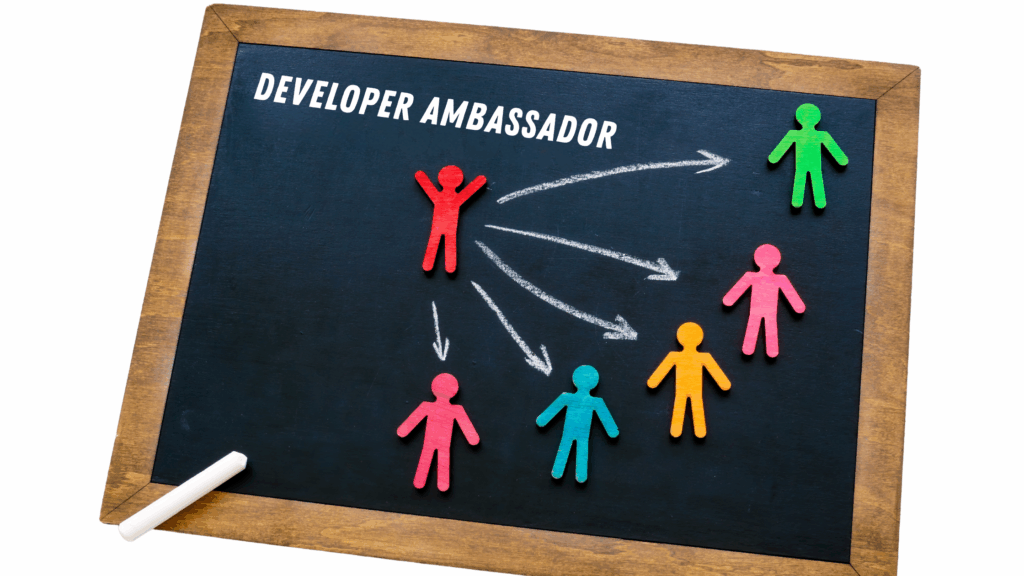Your team just booked a booth at KubeCon. Someone forwarded you the exhibitor handbook. You’re looking at 10,000+ attendees, hundreds of sponsors, and a price tag that’s hard to justify unless you generate real pipeline.
Most companies will spend the next few weeks obsessing over booth design and swag. Then they’ll show up, scan hundreds of badges, and follow up with generic emails that go nowhere.
We’ve worked with dozens of developer tools companies through their first KubeCon. The ones who generate actual pipeline…the ones who build relationships that turn into customers six months later…they approach the event completely differently.
Why Most Companies Waste Their KubeCon Investment
Walk through the sponsor showcase during any KubeCon and you’ll see the same pattern. Booth staff standing behind tables, waiting for attendees to approach them. When someone does walk up, the first question is usually about their logging infrastructure or deployment pipeline. It feels like a sales pitch within seconds.
By Wednesday afternoon, these teams have hundreds of badge scans. They’ll report back to leadership that the event was a success. Then they’ll spend the next month discovering that most of those contacts are students, people from companies that will never buy, or developers who stopped by for the swag.
The problem isn’t the event. KubeCon consistently delivers one of the best concentrations of technical buyers in the industry. The problem is treating it like a lead generation event when it’s actually a relationship-building event.
The companies that succeed at KubeCon understand something fundamental: developers and technical buyers don’t want to be sold to at a conference. They want to learn, connect with peers, and discover tools that solve real problems. When you approach KubeCon with that mindset, everything changes.
The Three-Phase Approach That Actually Works
Through our work with companies at various stages…from seed-stage startups to Series B companies scaling their developer programs…we’ve identified a systematic approach that consistently outperforms the standard “show up and scan badges” playbook.
Before the Event: Strategic Preparation Over Logistics
Most teams spend the week before KubeCon finalizing booth graphics and ordering t-shirts. The teams who generate real results spend that time on something different: strategic relationship mapping.
Start by identifying 15-20 people you specifically want to meet. These should be potential customers, partners, or influential community members. Reach out directly with a simple message: “We’re building tools for container security. I’d love to spend 15 minutes picking your brains while we’re both at KubeCon. Coffee Tuesday morning?”
This matters because everyone’s calendar fills up once the event starts. If you wait until Monday to schedule meetings, you’re competing with hundreds of other companies trying to do the same thing. The people you most want to talk to will already be booked.
Post on social media that you’re attending. Not a corporate announcement…just a genuine “Who else is heading to KubeCon? Let’s grab coffee” post. You’ll be surprised how many people reach out.
For your booth team, preparation means something specific: training everyone on how to start conversations naturally. The most common mistake we see is booth staff who either wait passively for attendees to approach or immediately jump into qualification questions.
Create a one-sentence description of your company: This should raise curiosity without requiring technical background. This is harder than it sounds. Test it with your team until everyone can deliver it naturally.
During the Event: Relationships Over Transactions
When you first walk into KubeCon, the scale will feel overwhelming. Ten thousand-plus people, hundreds of booths, dozens of simultaneous sessions. The companies who generate value don’t try to be everywhere…they focus on being strategic about where they invest time.
The social events matter more than most teams realize. Every KubeCon has multiple evening events, from small dinners to large receptions. Most are open to anyone who registers. This is where relationships actually form.
People are more relaxed at evening events. They’re not in “conference mode” where every conversation feels transactional. They’re having a drink, talking about the industry, sharing what they’re struggling with. These conversations lead to real relationships.
Make it a rule: no team dinners during KubeCon. Your team can have dinner together any time. During the event, every evening should be spent at social events or meeting with potential customers and partners.
During the day, the hallway track matters more than the sessions. We consistently see that the companies who skip most talks to spend time in conversations generate better results than those who sit through presentations. You can watch talks later. You can’t recreate the hallway conversations.
For your booth, the KubeCrawl is your highest-leverage time. This is when the exhibition hall is most crowded, when people are specifically there to explore booths. Yet we regularly see companies leave their booths empty during Cube Crawl. They’re tired, they want to get back to the hotel. This is exactly backwards.
Train your booth staff: If you’re operating a booth, being fully staffed and energetic during KubeCrawl should be non-negotiable. This is when you’ll have the most foot traffic and the best opportunities for conversations.
When someone approaches your booth, follow this conversation framework:
Step 1: Break the ice (30 seconds)
- “How’s the event going for you?”
- “When did you fly in?”
- “Catch any interesting talks yet?”
- Keep it casual and human…no sales pitch
Step 2: Light qualification (1-2 minutes)
- “Tell me a bit about what you’re working on”
- Listen for signals that match your ideal customer profile
- Ask about their role, company size, tech stack
- If they’re clearly not your customer, be direct about it
Step 3: Understand their situation (2-3 minutes)
- “What are you struggling with right now?”
- “What’s your urgency to solve this?”
- “Who else is involved in these decisions?”
- These questions feel natural but give you everything for follow-up prioritization
Step 4: Offer value (5 minutes max)
- Only after qualifying them as a genuine prospect
- “Based on what you shared, I think we might be able to help with X, Y, Z”
- “Mind if I give you a quick five-minute overview?”
- Focus on booking a real conversation after the event, not closing at the booth

What NOT to do:
- Don’t start with “How are you handling your logs/containers/security?”
- Don’t scan badges of people who aren’t your customers
- Don’t launch into your pitch before understanding their situation
- Don’t try to close deals at the booth
For people who don’t have a booth, the approach is simpler but requires more initiative. Attend sessions where your ideal customers will be. Sit near people, strike up conversations. Ask them what brought them to that talk. Share what you’re working on when it’s natural.
Use lunch strategically. Don’t eat alone or just with your team. Find a table with people you don’t know, introduce yourself, be genuinely curious about what they’re building.
The key mindset shift: you’re not there to sell. You’re there to meet people who are solving similar problems, to learn about the space, to be helpful where you can. Sales conversations happen later.
After the Event: Speed and Prioritization
Most companies wait until the following Monday to start follow-up. This is too late. By Monday, people are back in their normal routines, buried in email, and the emotional connection from meeting you has faded.
The right time to follow up is by end of week. Friday, even Thursday if you can manage it. People are still traveling home, the event is fresh in their minds, and they’re more likely to respond positively.
But here’s where most companies make the second mistake: they try to follow up with everyone equally. If you collected 300 badge scans, that’s 300 follow-up emails to write. It’s overwhelming and largely ineffective.
Instead, prioritize based on qualification. The people you had real conversations with, who match your ideal customer profile, who expressed genuine interest or shared a problem you can solve…these are your first-tier follow-ups. Reach out personally within 48 hours while the conversation is still vivid for both of you.
For second-tier contacts…people who might be a fit but weren’t deeply engaged…you can batch these into a more templated outreach the following week. Be honest about the value exchange: “We met briefly at KubeCon. Based on what you mentioned about X, I thought this resource might be useful.”
For third-tier contacts who aren’t really prospects, a simple connection on LinkedIn is enough. Don’t force a sales conversation where one doesn’t exist.
One approach we’ve seen work well: before the event, schedule a workshop or deep-dive session for the week after KubeCon. Make it invitation-only with limited spots. At the booth, invite qualified prospects to register. This gives you a natural next touchpoint that provides value rather than asking for a meeting.
The key is maintaining the relationship momentum while emotional investment is still high. Every day you wait, the logical side of someone’s brain rationalizes whether they really need to take that call. Act while they’re still excited about the conversation you had.
What Success Actually Looks Like
The teams who approach KubeCon this way consistently generate different outcomes. Instead of 500 badge scans with a 2% response rate, they get 75 highly qualified conversations with a 40% conversion to follow-up calls.
Six months later, when they track pipeline, they can connect deals back to specific conversations at KubeCon. Not because they sold at the event, but because they built authentic relationships with people who had real problems.
This matches what we see across our customer base. Companies that treat conference attendance as relationship-building rather than lead generation see measurably better ROI. The difference isn’t in their booth design or their swag…it’s in their systematic approach to conversations, qualification, and follow-up.
This systems-based approach is exactly what we focus on at Stateshift.
We help developer tools companies design repeatable playbooks for events like KubeCon — so every conversation, session, and social event ties back to a clear developer growth strategy.
Our clients use the same frameworks we apply to community and developer advocacy: structure over guesswork, clarity over chaos, and consistent post-event systems that actually generate pipeline.
If you want a deeper dive into how we help teams operationalize this kind of approach, explore our guide on building developer advocacy programs that scale.
Getting Started This Week
If you are reading this and KubeCon is next week, you still have time to shift your approach:
Map out 15 strategic people to meet and start reaching out today. Even if you only book three conversations, that’s three high-value relationships you wouldn’t have otherwise.
Train your booth team on the conversation framework. Practice it until it feels natural. Make sure everyone understands that badge scans aren’t the success metric…qualified conversations are.
Identify the social events happening during KubeCon and make plans to attend. Block time in your calendar for these. Treat them as seriously as you would a major customer meeting.
Create your follow-up system now. Know who will be responsible for first-tier, second-tier, and third-tier outreach. Have templates ready so you can execute quickly.
The companies that generate real value from KubeCon aren’t doing anything magical. They’re being systematic about relationship-building in an environment where most competitors are just trying to collect as many contacts as possible. That systematic approach…treating every interaction as the start of a potential relationship rather than a transaction…makes all the difference.
Frequently Asked Questions
How many badge scans should we aim for at KubeCon?
At Stateshift, we feel that badge scan volume is the wrong metric. Focus instead on qualified conversations. A company with 50 badge scans from people who match their ideal customer profile and had substantive discussions will generate more pipeline than one with 500 random scans. Train your team to qualify prospects through conversation before scanning badges, and prioritize quality over quantity.
What’s the best way to stand out when there are 300+ other sponsors?
You don’t stand out through booth design or swag…you stand out through genuine conversations. Most companies wait for attendees to approach or immediately pitch their product. Start with ice breakers, ask about their work, and only discuss your solution after understanding their challenges. This natural approach makes you memorable when most vendors are transactional.
Should we attend talks or spend time networking?
Networking delivers higher ROI at KubeCon. You can watch recorded sessions later, but you can’t recreate in-person conversations. Focus your time on the hallway track, social events, lunches, and Cube Crawl. Companies that skip most sessions to invest in conversations consistently generate better results than those who prioritize attending talks.
How quickly should we follow up after KubeCon?
Follow up with qualified prospects by end of week, ideally within 48 hours for your highest-priority contacts. By Monday, people are back in normal routines and the emotional connection has faded. Different tiers of contacts need different follow-up speeds: personal outreach for qualified prospects immediately, templated emails for second-tier contacts by the following week, and simple LinkedIn connections for others.
What should booth staff do during Cube Crawl?
Cube Crawl is your highest-leverage time at KubeCon. The exhibition hall is most crowded and attendees are specifically there to explore booths. Ensure your booth is fully staffed with your most engaging team members. Be proactive about starting conversations, use your qualification framework, and treat this as your prime opportunity for meaningful interactions. Never leave your booth empty during this period.
How do we justify KubeCon costs if we’re bootstrapped?
Focus your entire strategy on qualified pipeline rather than broad awareness. Book strategic meetings before the event with potential customers. Skip expensive booth additions and premium swag in favor of investing team time in high-value conversations. Track qualified conversations and follow-up meetings rather than badge scans. The ROI comes from 10-15 solid relationships that turn into customers, not from general brand visibility.









